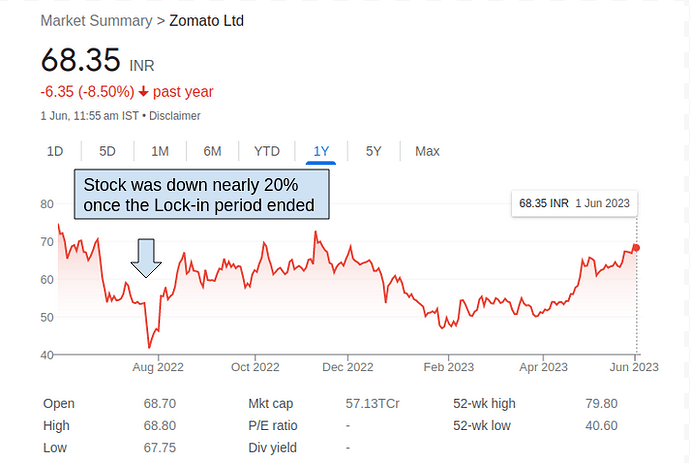What is a Lock-in period in IPOs?
Lock-in period is a time period for which the investors such as Anchor Investors in the IPO and promoters of the company doing an IPO, have to mandatorily hold the shares after allotment of the shares.
Who does it affect?
Although there is no restriction of Lock in period for retail investors. There are different types of restrictions for different types of investors.
Promoters: If the object of the issue involves offer-for-sale or financing other than for capital expenditure for a project:
-
Minimum promoters’ contribution of 20%: To be locked-in for 18 months from the date of allotment in the IPO from 30 months previously.
-
Excess of 20% contribution: 6 months Lock in period from the date of allotment from 1 year earlier.
Anchor Investors: From April 1st, 2022, 30 day Lock in period was applicable for maximum 50% of the Anchor Investors book. For the remaining 50% the Anchor Investors are mandatorily required to hold the shares for at least 90 days.
Earlier, there was a 30 day lock in period for all Anchor Investors.
Note: Anchor Investors are institutional Investors who are allotted significant shares at a fixed price before the IPO opens to the public.
Non promoters: 6 months lock-in period from the date of allotment from 1 year earlier
What happens to the stock when the Lock in period ends?
Generally, selling pressure is visible in stocks once the lock-in period ends as shareholders who were mandatorily required to hold shares exit the shares either look to book gains or exit the stock at a loss depending on the price they were allotted.
In the recently issued IPOs, this trend was visible in LIC, Zomato, Nykaa and many other stocks.
